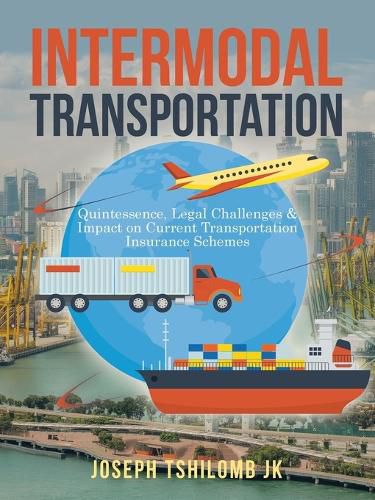Readings Newsletter
Become a Readings Member to make your shopping experience even easier.
Sign in or sign up for free!
You’re not far away from qualifying for FREE standard shipping within Australia
You’ve qualified for FREE standard shipping within Australia
The cart is loading…






This title is printed to order. This book may have been self-published. If so, we cannot guarantee the quality of the content. In the main most books will have gone through the editing process however some may not. We therefore suggest that you be aware of this before ordering this book. If in doubt check either the author or publisher’s details as we are unable to accept any returns unless they are faulty. Please contact us if you have any questions.
Transportation technologies in the field of unitization of goods, which culminated in the advent of containerization, have led to the subsequent development of intermodal transport featured by the integration of the following modes of carriage of goods: airways carriage, carriage by sea, inlands waterways, railways, and truck services. Whereas the technical, commercial, and economic aspects of the international intermodal transportation have been adequately addressed in scholarly publications, the legal regime related to the liability of the intermodal carrier is still unpredictable, quite unreliable, and does not respond to the requirements of the intermodal transportation for the purpose of the promotion of the global economy.
At present, transport in carriage of goods means getting goods delivered from the producer to the consumer. The process would more likely involve an international intermodal carriage. The unpredictable, inadequate, and uncertain liability regime in international carriage of goods, as referred to previously, has a significant impact on the insurance schemes available in intermodal transportation.
As a consequence, the insurance industry has been coping with conflicting laws and regulations while settling claims arising from frequent and high capital-intensive risks in the international intermodal carriage of goods.
$9.00 standard shipping within Australia
FREE standard shipping within Australia for orders over $100.00
Express & International shipping calculated at checkout
This title is printed to order. This book may have been self-published. If so, we cannot guarantee the quality of the content. In the main most books will have gone through the editing process however some may not. We therefore suggest that you be aware of this before ordering this book. If in doubt check either the author or publisher’s details as we are unable to accept any returns unless they are faulty. Please contact us if you have any questions.
Transportation technologies in the field of unitization of goods, which culminated in the advent of containerization, have led to the subsequent development of intermodal transport featured by the integration of the following modes of carriage of goods: airways carriage, carriage by sea, inlands waterways, railways, and truck services. Whereas the technical, commercial, and economic aspects of the international intermodal transportation have been adequately addressed in scholarly publications, the legal regime related to the liability of the intermodal carrier is still unpredictable, quite unreliable, and does not respond to the requirements of the intermodal transportation for the purpose of the promotion of the global economy.
At present, transport in carriage of goods means getting goods delivered from the producer to the consumer. The process would more likely involve an international intermodal carriage. The unpredictable, inadequate, and uncertain liability regime in international carriage of goods, as referred to previously, has a significant impact on the insurance schemes available in intermodal transportation.
As a consequence, the insurance industry has been coping with conflicting laws and regulations while settling claims arising from frequent and high capital-intensive risks in the international intermodal carriage of goods.